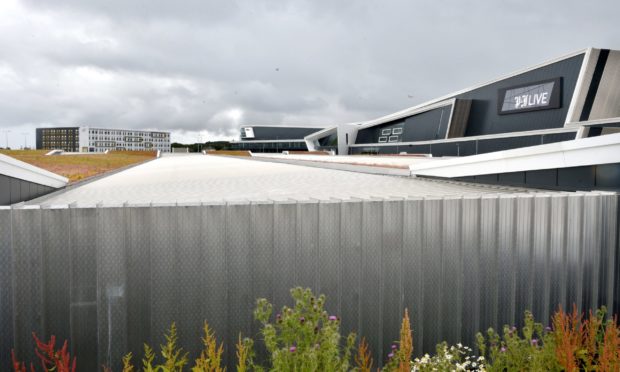Spending on Aberdeen’s replacement exhibition centre has topped £425 million – with the council being warned it may need to consider the long-term focus for the facility after the pandemic.
Financial experts have expressed fears the events and conference space at P&J Live – currently being used as a mass vaccination centre – may not be operational in 2022.

And that has led them to caution that millions of pounds that would have flowed into the region’s coffers from the facility and hotels on the site may be lost.
The centre was completed in 2019 at a cost of £393.7 million but continuing construction on an on-site power plant, within The Events Complex Aberdeen (Teca), has sent the gross cost of the project skywards.
The latest £425 million gross cost was highlighted in a report by Moody’s, as the firm maintained the city’s long-term A1 credit rating.
Councillors have now been briefed on the expert analysis of its finances, required as the city previously issued bonds on the London Stock Exchange to boost coffers.
Pandemic impact could be long-lasting
The Moody’s report reads: “Construction risk is now materially lower, as the majority of the programme is now complete, including the energy centre.
“However, Aberdeen remains exposed to significant revenue risk in operation phase.
“The coronavirus pandemic has effectively closed the venue for the majority of 2020, although both of the hotels on the site were operational for part of the year.
“A net surplus of £4 million was expected in financial year 2021 and this is now expected to be close to zero.
“It is uncertain whether it will be able to open in financial year 2022 and, if not, a similar loss can be expected in this fiscal year.
“Over the medium to long-term, the impacts of the pandemic on the events and conference industry may result in a shift in demand for TECA’s services, resulting in the local authority having to reconsider the focus of the site.”
Energy production at centre
Aberdeen City Council hired Austrian specialists Thoni in 2019 to construct its anaerobic digestion gas to grid facility at the Bucksburn complex, linked to the on-site energy centre.
The local authority plans to convert the city’s food waste, as well as farming waste, to produce biogas to power the arena, conference centre and exhibition building.
Excess fuel produced will be piped-off to the national grid.
It is now undergoing months of testing, with the work expected to be completed by April.
Council resources director Steve Whyte said: “We are waiting for final costs around that.
“Assuming we get the plant fully tested, we will get the results of all that and do the analysis, hoping a report would come to councillors sometime in the summer.
“When we get the anaerobic digestion plant complete and we get the test results and we know it’s actually doing what it says on the tin, we will have a more definitive timeline with when we can come back with the post construction evaluation.
“We would have hoped to have taken some part of that to committee around the P&J Live, but obviously with the pandemic and the facility not being able to operate because of the lockdown, we have not been able to do that.”
City at heart of hydrogen plans
Meanwhile, councillors have been told companies interested in taking on the management of a hydrogen production facility in Aberdeen believe they can lower the consumer price of the costly fuel by the end of 2022.
There are hopes green hydrogen could be one of the city’s next big exports, as city chiefs look beyond oil and gas.
The city council secured £8.3 million in grant funding to bring a 15-strong fleet of world-first hydrogen double decker buses to Aberdeen – partly in an effort to show of the technology and encourage widescale adoption across the UK and Europe.
But there are concerns the larger commercialisation of the technology won’t happen until hydrogen costs the same as petrol and diesel at the pump.
Louise Napier, a project manager working through the notes of interest from firms in operating the facility, told members that was expected cost parity with diesel was expected “within 18 months”.

